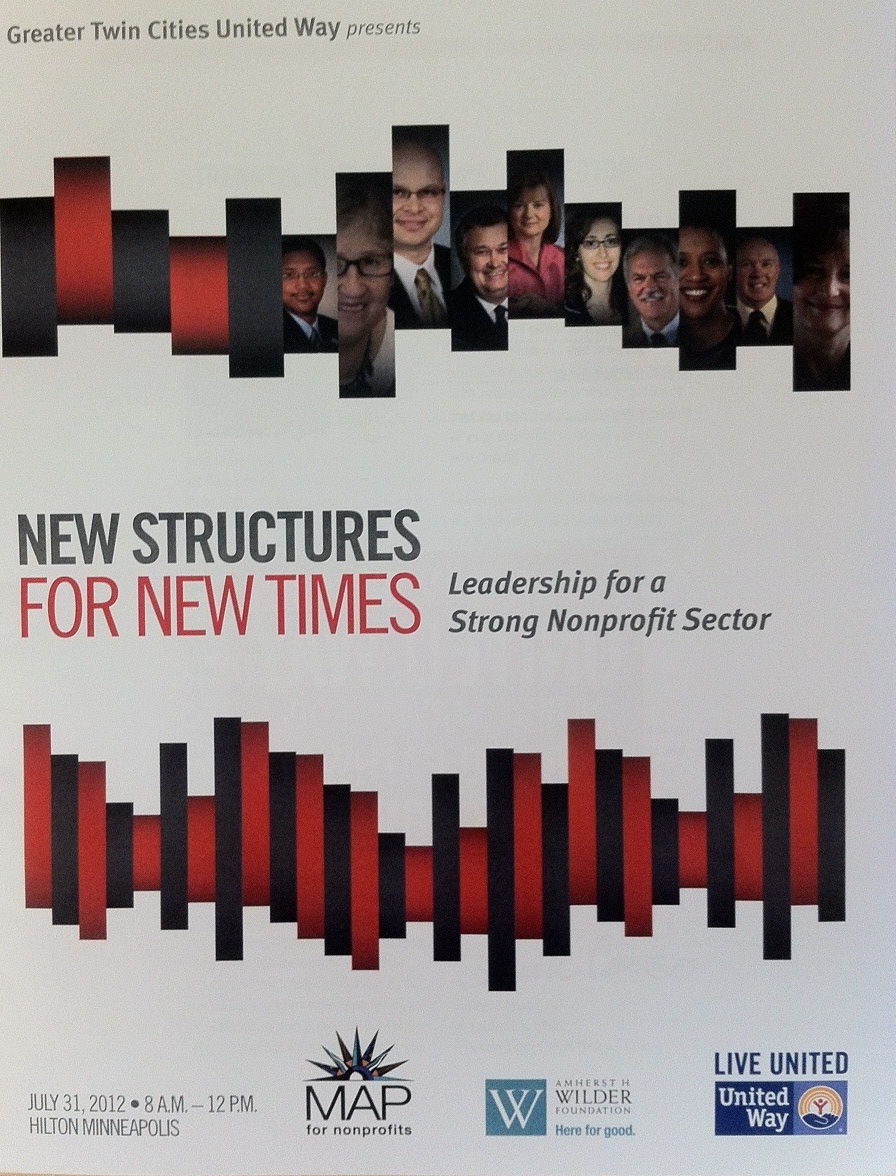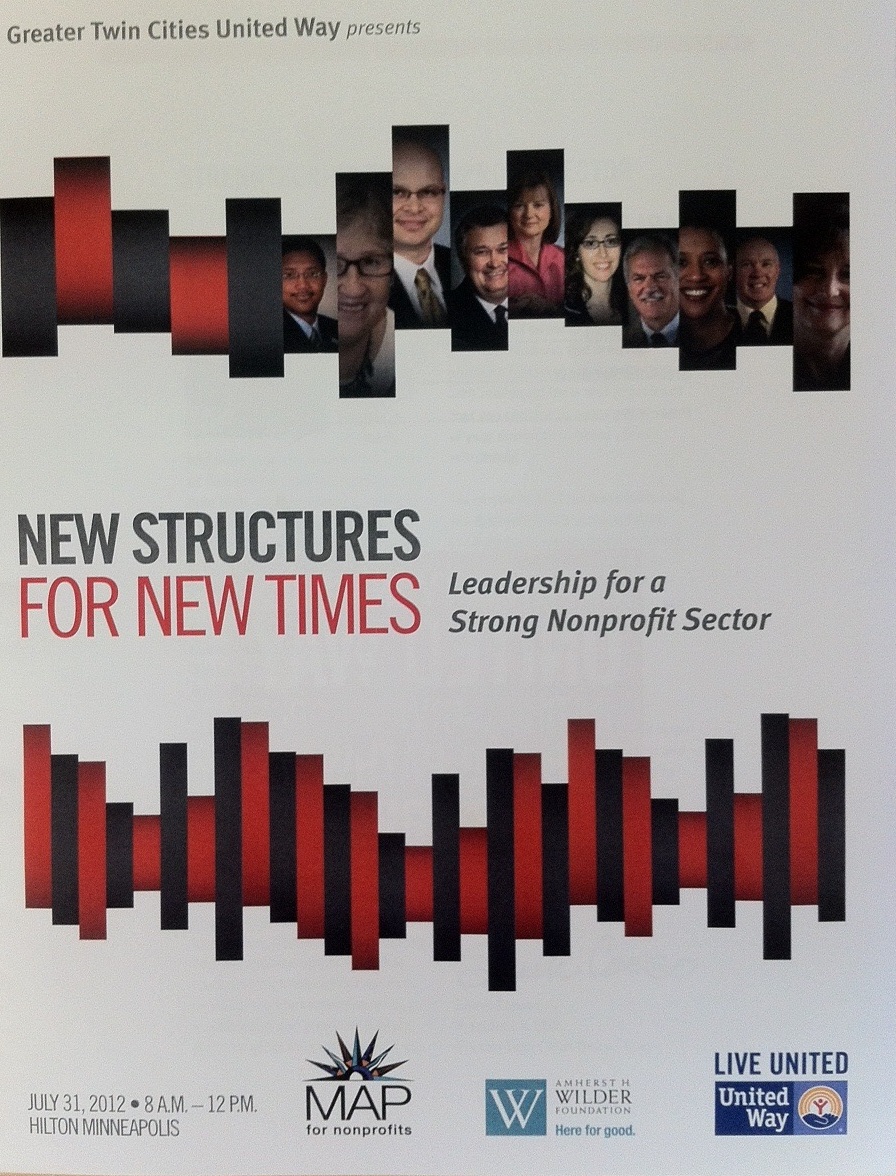
Two Themes – Part One
Recently, Greater Twin Cities United Way, with MAP for Nonprofits and Wilder Foundation, sponsored a “New Structures for New Times” conference. Over 500 nonprofit and foundation representatives attended, hearing that our nonprofit sector needs to strengthen through collaborations, mergers, acquisitions, dissolutions, and “similar proactive steps.
The familiar litany of reasons for these actions were all mentioned: government cuts, “new normal,” need for more businesslike management, increasing societal need. The overall theme in this work is that we are faced with a dilemma, given the number of nonprofits and the shrinking resources available to them.
The keynoter, Paul Grogan, president of the Boston Foundation, described aggressive leadership and funding to achieve successful mergers and collaborations in very persuasive language.
Judy Alnes, CEO of MAP for Nonprofits, then introduced a research study called Success Factors in Nonprofit Mergers done by MAP and the Wilder Foundation.
The economy and funding played significant roles in the motivation to merge, the study reported. Success factors included executive leadership, prior experience with collaboration and partnerships, board involvement, shared vision of the merger’s benefits, financial problems, full staff involvement, funder participation and input, and sharing of the costs of merger.
MAP, showing more sophistication and nuance than most advocating this theme, had an interesting breakout session on options across the realignment spectrum. MAP asserted, “It’s not all about mergers! Many forms of structural realignment are available.” Included are such options as collaborations, shared back-office services, joint ventures and more.
Is That All There Is?
Nevertheless, the theme is one of realignment. Is realignment the only answer?
Definitely not, and our friends at MAP would agree.
Clearly, one of the realities of the current nonprofit situation is shrinking government resources, along with minimal growth at best in foundation, corporate and individual giving. This is the ‘Gloom and Doom’ Theme we hear over and over, with many wallowing in the dilemma and pushing realignment. Realignment may just result in the same old processes and solutions as before, without significant increases in quality and outcomes.
And it is outcomes as well as societal impacts that really matter.
There is another theme, however. I would call it The Empirical Social Impact Rearrangement Scenario. There is much upside in the approach, which we will explore in Part Two.



I think collaboration is key to nonprofits success, and I’ve seen more grant applications that ask who you collaborate with on projects and programs you need funding for. I’d also love to see a decline in people jumping in to start a new nonprofit before really researching what is already out there! Looking forward to part two 🙂
Thanks for the great blog. I was about to take exception to your depiction of this study as “small.” But I suppose our sample size (41 nonprofit mergers) seems very small when you compare it to the cardiac research in which you’ve been involved – I guess it all depends on your vantage point! Looking forward to part 2!
[…] from The Good Counsel – A Service of Toscano Advisors LLC James V. […]